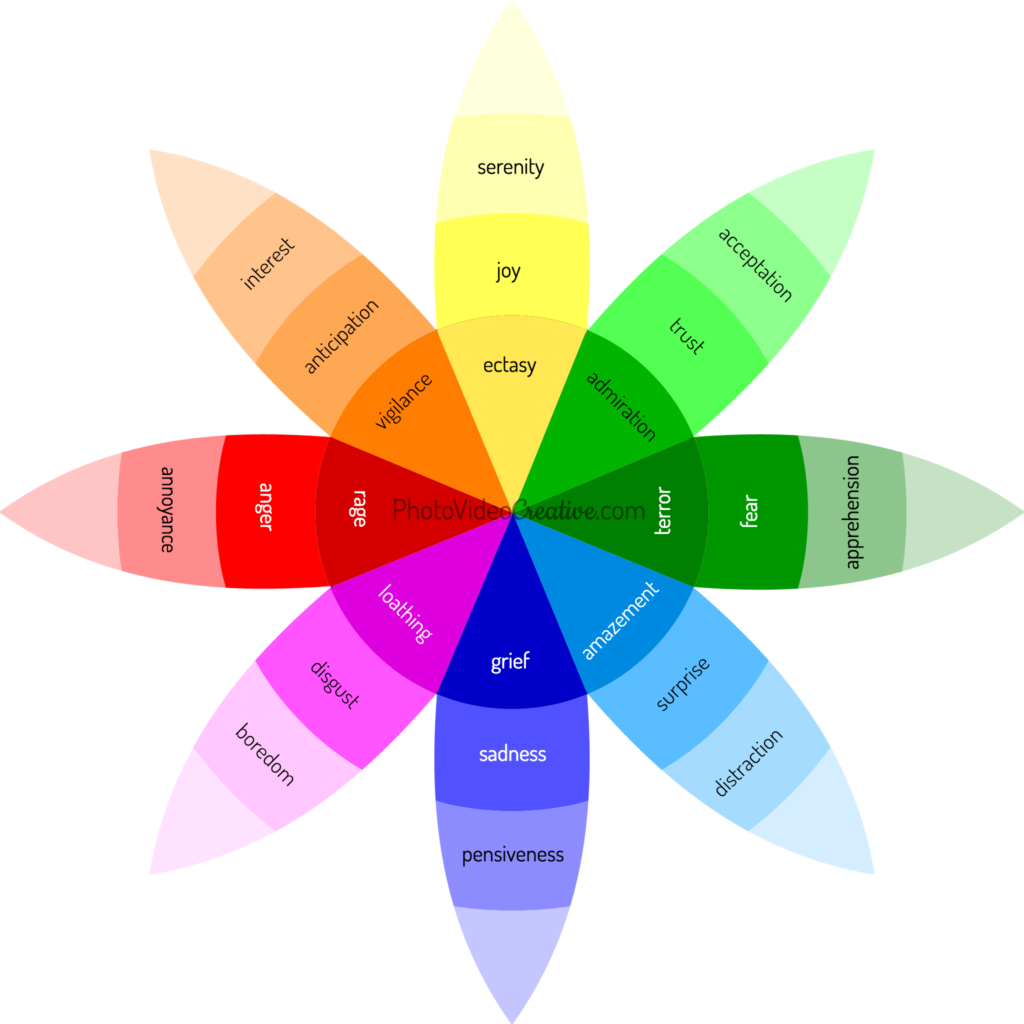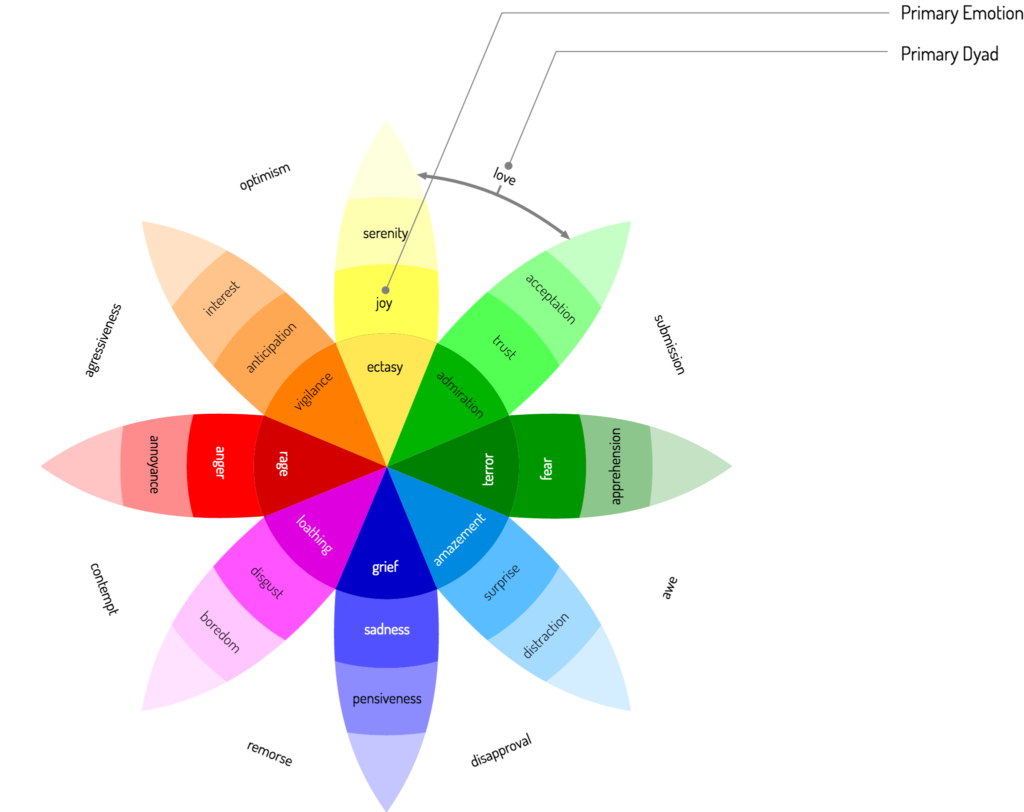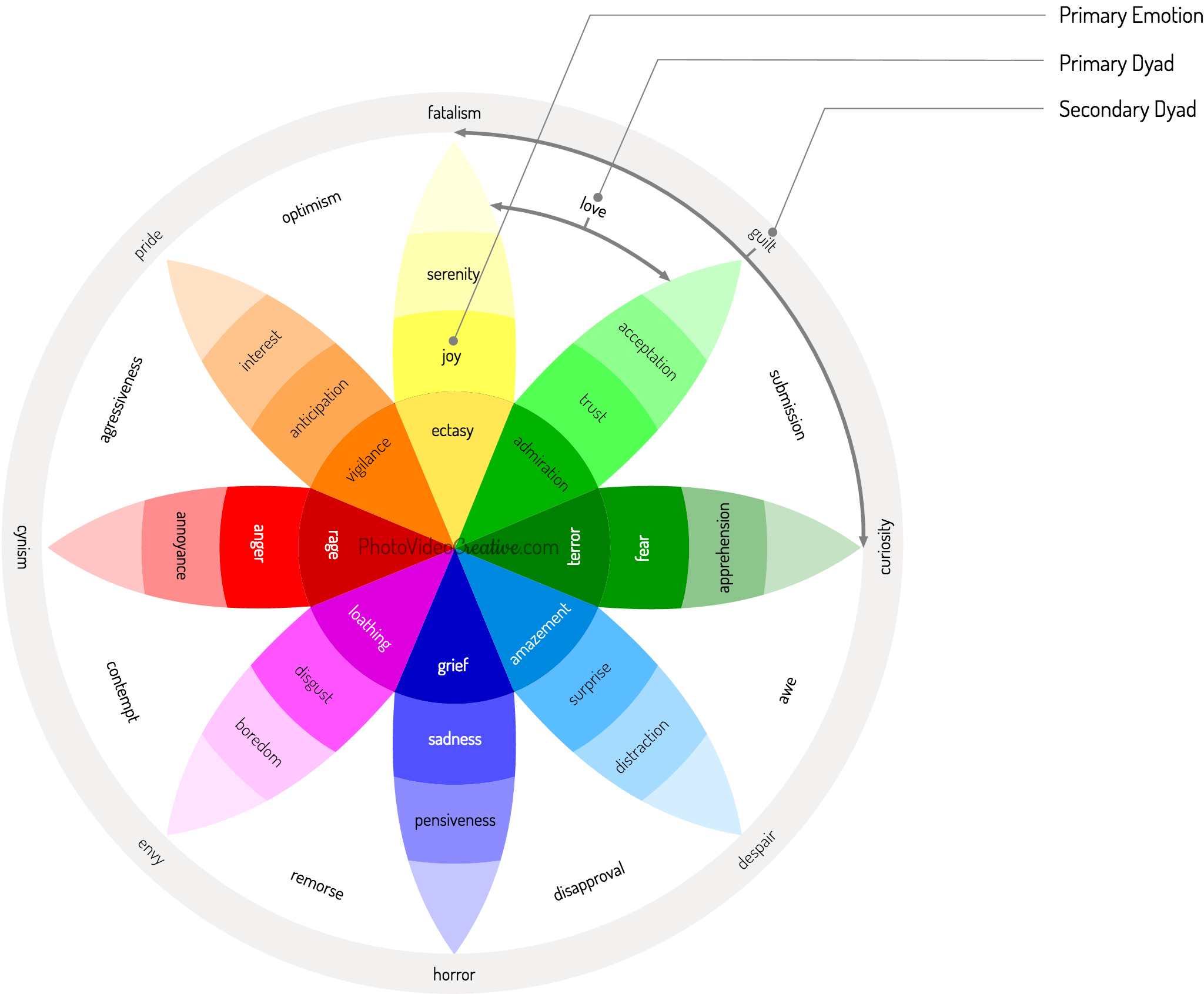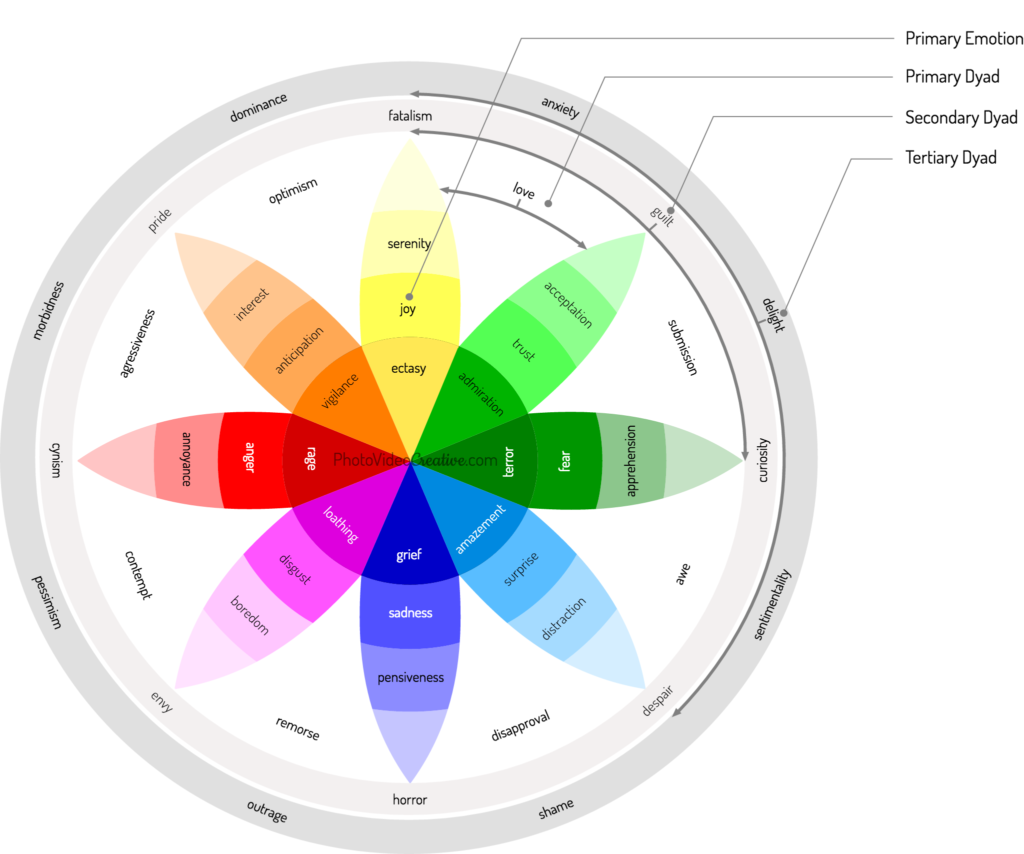The creative photographer is not interested in remembering the reality, but what emotions he felt when shooting.
Like all forms of artistic expression, your ultimate goal should be to capture and share your richest and most powerful emotions.
Do not think that emotion expression is reserved solely for artistic photographers.
Even when your “audience” is just your family and friends circle, being able to express your emotions in image from intimate events, produces tremendous effects on the beauty of your photos.
But what is the nature of the emotions and what are they used for? Is it really possible to define them simply? Can we express all the emotions in photography? Is it not contradictory to want to master photographic techniques and the expression of emotions?
The Plutchik’s Wheel: The Catalog Of Our Emotions
American psychologist Robert Plutchik has spent his life analyzing, understanding and modeling emotions in humans. He gave birth to a remarkable theory of emotions represented on a wheel, like the color wheel well known in painting.
This wheel is composed of 8 primary emotions. Primary emotions have different intensities: the more intense are in the center, the less intense at the periphery of the wheel.

Primary emotions are the primordial emotions to life: they are the ones that have allowed the survival and reproduction of animals and humans, and have followed them throughout their evolution.
For example, terror makes us flee, rage makes us stronger to fight an adversary, joy makes us renew the act that gives birth to it, aversion makes us not eating what is repulsive, acceptance makes us feeling surrounded by our loved ones, etc.
These primary emotions are also opposite 2 by 2 and arranged on complementary colors:
- Joy / Sadness,
- Confidence / Disgust,
- Fear / Anger,
- Surprise / Anticipation.
Other emotions can be added to the wheel of primary emotions. First, there are the emotions that are the combinations of 2 adjacent emotions: these are the primary dyads.

The primary dyads are:
- Joy + Trust = Love
- Trust + Fear = Submission
- Fear + Surprise = Awe
- Surprise + Sadness = Disapproval
- Sadness + Disgust = Remorse
- Disgust + Anger = Contempt
- Anger + Anticipation = Aggressiveness
- Anticipation + Joy = Optimism
Then, there are the emotions that combine two adjacent primary emotions but separated from one emotion: these are the secondary dyads.

Secondary dyads are:
- Joy + Fear = Guilt
- Confidence + Surprise = Curiosity
- Fear + Sadness = Despair
- Surprise + Disgust = Horror
- Sadness + Anger = Envy
- Disgust + Anticipation = Cynicism
- Anger + Joy = Pride
- Anticipation + Trust = Fatalism
Finally, there are the emotions that combine 2 adjacent primary emotions but separated by 2 emotions: these are the tertiary dyads.

The tertiary dyads are:
- Joy + Surprise = Delight
- Trust + Sadness = Sentimentality
- Fear + Disgust = Shame
- Surprise + Anger = Outrage
- Sadness + Anticipation = Pessimism
- Disgust + Joy = Morbidness
- Anger + Trust = Domination
- Anticipation + Fear = Anxiety
Thus, the Plutchik wheel allows to represent in 48 emotions, a particularly comprehensive palette of what everyone can feel at one time or another of his life.
This wheel also shows the relationship principles which make possible to break down emotions and the central role of the primary emotions in these combinations.
Why A Successful Photo Is An Emotional Photo
Plutchik demonstrated that the 8 primary emotions are closely related to our survival instinct.
When you are looking for an intense emotional load, you want to satisfy the need to feel alive: when you feel emotions, you confirm that you’re alive.
Like all forms of art, photography can satisfy our emotional appetite. If a photo triggers intense emotions, then it is necessarily successful because it responds to our desire for life.
But how can you as a photographer do that?
How To Translate Emotions Into Photograph
First of all, the Plutchik’s wheel shows that you can focus only on primary emotions, but thanks to primary, secondary or tertiary combinations, you will evoke a wider range of emotions.
In a sense, you as a photographer are like a painter who from 4 primary colors -cyan, magenta, yellow and white- is able to represent all possible colors.
In addition, you can enhance the emotional value of your photo by playing on the harmony of emotions, as you would play on the harmony of colors.
All that applies to color theory can be transposed to Plutchik’s theory of emotions. The photographer can make a picture with adjacent emotions, like using analogous colors. Or it can also put in tension his photo with opposite emotions, like using complementary colors.
Finally, you can play above all on photographic techniques to isolate and accentuate the primary emotions you have felt.
To discover the techniques that have an emotional impact on your photos, please go the Where To Start section.
What Do You Think?
Do you now have a better understanding of emotions? Do believe the Plutchik’s theory is useful, or too complex or over-simplistic?
Leave me your comment, I will answer with pleasure.
Did you like this article? Share this article with your loved ones!
Do you sell Plutchik’s wheel (the one with all the parts including the two outer rings) ?
Haha, no I don’t. Maybe I should launch a business 😉
Amauary, for some reason I wrote a question in English on your French website?!?!? 🤪 One of your team, answered in French. An obvious choice, being a French company. I’ve been learning your course about emotions & photography. In 2018 , you said that new content would appear “soon”. Do I need to go to another of your websites? I really want to finish your very helpful lessons! Thanks in advance, JB.
Hello John, I believe I’ve been trapped into another space-time universe ;-). Me also I thought at the time to be much more productive about all this 😂.
But hopefully, I’ve put all that delay into something really powerful I believe. What was an intuition of a system at the time, is now a much robust system that I’m eager to share in the coming months (I won’t say weeks, as I’ll start first to share it in French 😉 very soon).
It will be only delivered through the subscribers of my mailing list, so I strongly invite you to share your email address.
But if you really want a sneak peek, please contact me by DM at my email address!
Many thanks for your interest.
I cant understand how to use this in photography…